-
February 4 1902
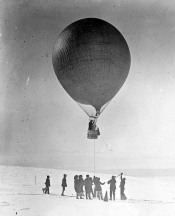
First balloon flight in Antarctica
On this day in 1902, the first gas balloon flight was made over Antarctica as part of the British National Antarctic Expedition, generally known as the Discovery Expedition which took place between 1901 and 1904.
The expedition lead by Robert Falcon Scott arrived Cape Adare on 9 January 1902. After a brief landing and examination of the remains of a previous expedition camp, the ship continued southwards along the Victoria Land coast. At McMurdo Sound the Discovery turned eastward, touching land again at Cape Crozier. After that the ship followed the Barrier to its eastern extremity where, on 30 January, they discovered land and named it King Edward VII Land.
On 4 February, Scott landed on the Barrier and unpacked an observation balloon which he had acquired for aerial surveys. Scott climbed aboard and rapidly ascended to above 600 feet in the firmly tethered balloon. Ernest "The Boss" Shackleton followed with a second flight. All either could see was and unending Barrier surface. -
February 7 1903
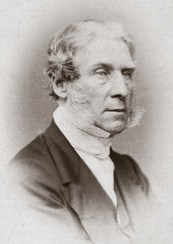
English meteorologist and aeronaut James Glaisher dies
On this day in 1903 died in Croydon, Surrey at the age of 93 the english meteorologist, aeronaut and astronomer James Glaisher.
He was born in Rotherhithe, in 1809. Glaisher was a Junior assistant at the Cambridge Observatory from 1833 to 1835 before moving to the Royal Observatory, Greenwich, where he served as Superintendent of the Department of Meteorology and Magnetism at Greenwich for thirty-four years. In 1845, Glaisher published his famous dew point tables, for the measurement of humidity.
As a pioneering balloonist, with Henry Tracey Coxwell as his co-pilot, Glaisher made numerous ascents to measure the temperature and humidity of the atmosphere at its highest levels between 1862 and 1866. Specially remarkable was his ascent on the "Mammooth" balloon on 5 September 1862 that broke the world record for altitude, althought he passed out around 8,800 metres before a reading could be taken and both aeronauts were at a brink of perishing. -
February 14 1952
MOBY DICK project balloon sets new record
On this day in 1952, a balloon launched from Holloman Air Force Base, New Mexico, flew for 92 hours at 52,000 feet, setting a new record for sustained, constant high-altitude balloon flight.
The flight was part of the developmental effort behind Project Moby Dick, an extensive study of the high altitude wind currents performed at staggered altitudes between 50.000 and 100.000 feet by the Air Force over the United States in the first half of the 50's decade.
The balloon -manufactured by Winzen Research Inc. using 2.5 microns thick polyethilene- measured 45 feet in diameter and carried a payload of 288 lbs. The mission was terminated on February 18 and the payload landed NE of Montreal, Canada. -
In February 1953
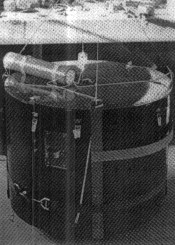
E77 balloon anti-crop biological munition tested in Utah
During february 1953 was tested over Duwgay Proving Grounds in Utah, US the E77 an 80-pound biological bomb intended primarily for the dissemination of dry anticrop pathogens from a free-flight balloon.
It consisted of an insulated fiberboard "hatbox", 32 inches in diameter and 24 inches high, opening in clamshell fashion about the vertical centerline to distribute the agent packages. Five agent containers holding approximately 16,5 pounds of carrier plus 1,75 pounds of agent were grouped around a chemical-type heater designed to maintain the proper agent environment. A neutralization system was included to render the agent innocuous in case of malfunctioning of the balloon delivery system. A combination barometric and mechanical timer fuze provided the control for the neutralizing system, flight termination, munition drop and agent dissemination.
Four preliminary tests were performed from planes over the test range, and finally a balloon drop test during which the munition was released by radio control in lieu of the timer's functioning. The flight was entirely satisfactory and proved the feasibility of the munition. -
February 12 1953
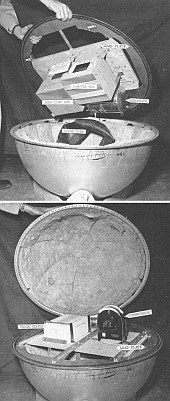
Seven mice survive 6 days inside a balloon gondola
On this day in 1953 the Space Biology Branch of the Aero Medical Field Laboratory performed a balloon flight to expose mice during 24 hours to primary cosmic radiation in the stratosphere over southern US.
The special sealed gondola was developed by the University of Minnesota and carried a load of seven hamsters, track plates for cosmic ray monitoring and incorporated as a test 20 pounds of water in a rubber inner tube to keep the animals in the gondola warm at night and cool during the day time.
The balloon was launched at Holloman on 12 February at 7:30. Two hours after launch, the B-17 tracking plane started to chase the balloon but at some point during the day the signal was weak enough and very difficult to track. The B-17 lost sight of the balloon over the Gulf of Mexico. During the night, the balloon descended to 82,500 feet, but had started to recover altitude the next morning at the time of cut-down.
The capsule landed 5 miles east of Whiting Naval Air Station, Milton, Florida, at approximately 8:30, on 13 February 1953. Although the capsule was recovered that same day, it was not opened until 6 days later after a phone call was made from Holloman to the Commander of the Naval Air Station, who immediately opened the capsule. The seven hamsters were somnolent but in a few minutes they awakened and appeared normal. That same day were returned to Holloman for examination. -
February 21 1964
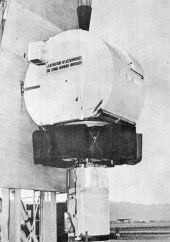
Automated balloon-borne telescope observes the atmosphere of Venus
On this day in 1964 a 200 feet diameter balloon was launched by Air Force Cambridge Research Labatories personnel from Holloman AFB, New Mexico, transporting a special telescope to make spectroscopic records of the planet Venus. The Mission was the third one of Project BAL-AST (Balloon Astronomy) under guidance of Dr. John D. Strong of the John Hopkins University. The instrument was fully automated and consisted of a 41 cm Schmidt-mirror telescope coupled with an infrared spectrometer.
The balloon manufactured by G.T. Schjeldhal Company was made of a composite material named GT-12 (Dacron and Mylar scrim) and had a volume of 3.200.000 cubic feet. The mission endured 6 hours and 30 minutes which the telescope spent mostly near 88.000 feet of altitude.
As a result of the flight, decisive conclusions were obtained about the occurrence of ice crystals in the clouds of Venus. -
February 17 1965
Large balloon launched to record altitude by Air Force
On this day in 1965, the largest balloon constructed so far completed a successful 26 hour flight over western US. Launched from the Air Force facility in Chico Municipal Airport, California, by the Air Force Cambridge Research Lab. the 450 feet long polyethylene balloon lifted a 450-lb. instrumented payload to a record altitude of 142.000 feet. At float altitude, the balloon became oblate, or pumpkin-shaped, reaching 330 feet diameter and 270 feet height. Payload consisted of instruments to measure atmospheric temperature, density, and pressures, telemetry equipment and a command receiver for control of the flight. The cargo was parachuted to earth and recovered near Logandale, Nevada.
-
February 2 1966

Nick Piantanida's second attempt to break free fall record
On February 2 in 1966, Nick Piantanida, an amateur parachute jumper from New Jersey made the second attempt to break the world free-fall record jumping from a stratospheric balloon.
The mission was launched from Joe Foss Field near Sioux Falls, South Dakota, and reached an unprecedented altitude of 123,500 feet. From that height he had planned to parachute but was unable to disconnect himself from his oxygen line. He aborted the jump and detached from the balloon, returning to earth in the gondola. Because he did not return to earth with his balloon, his absolute altitude record remained unofficial.
Piantanida would suffer an accident during the third attempt that would lead him to a four months comma and later death in August that same year. -
February 28 1973
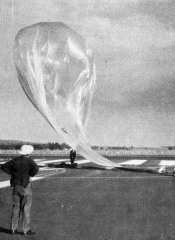
Balloon launched from Australia completes two trips around the world
On this day in 1973, a balloon launched by NCAR from Australia completed a 36 day trip around the world. The mission was part of project Boomerang, an engineering test in NASA'S balloon program to study near-earth phenomena. The program's goal was to build superpressure balloons that would orbit at altitudes of 40 km, stay aloft for six months or more, and carry up to 227 kg of scientific instruments.
The 19 meter balloon Boomerang I was launched on January 24 from an airfield at Oakey, Australia. The balloon made two orbits over Australia, South America and Africa in 36 days and covered 46,000 miles at altitudes of 80,000 feet. At the end of the second turn the payload parachuted to within 15 km of the launch site.
The balloon carried a payload of 40 kg consisting of passive experiments to study cosmic rays and their effect on corn seedlings and other vegetation and to collect micrometeorites. -
February 5 1984
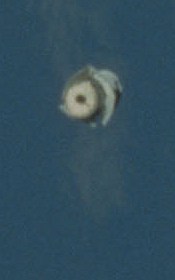
Balloon device deployed in orbit from Shuttle Challenger
On this day in 1984 was performed in orbit during Space Shuttle mission STS-41B a test ejection and inflation of a device known as the IRT (Integrated Rendezvous Target). IRT was scheduled as a pathfinder to the future SolarMax Repair Mission (STS-41C) to practice the rendezvous, capture and on-orbit repair of the SMM satellite. IRT was a 2 m diameter balloon built of one-mil thick aluminized Mylar, the IRT balloon was flat white in color except for one of the 24 gores painted infrared black. The balloon, inflation equipment and sintered tungsten ballast results in a total weight of 90.7 kg.
It was deployed from a rack bolted to the forward end of the Space Shuttle Challenger's longeron on the port side of the payload bay. The target and its canister were ejected in a retrograde direction. The canister was meant to split in half and inflate automatically with nitrogen to a pressure of 0.3 psia one minute later, but the mechanism to open the canister was not activated, because the lanyards pulled loose from the orbiter instead of pulling out of the canister. The nitrogen inflation cartridge did fire as scheduled, and the balloon burst as it began to inflate inside its canister. The remaining pieces of the balloon provided enough of a target for three rendezvous instruments to provide data important in verifying their capabilities. -
February 11 1985
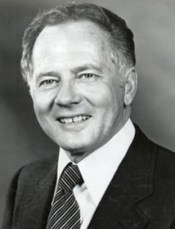
Aeronaut Ben L. Abruzzo dies
On this day in 1985 the aeronaut Ben L. Abruzzo died at the age of 54 when his twin-engine airplane crashed just after takeoff in Albuquerque, New Mexico. In the accident also perished Abruzzo's wife and four other people. His name is associated with important ballooning feats.
Along with Maxie Anderson attempted a gas balloon flight in Double Eagle to Europe on September 12, 1977 from Marshfield, Massachusetts. They did not reach their goal, but instead touched down in the sea near Iceland after completing the longest balloon flight ever made covering 2,950 miles.
Abruzzo again with Anderson and Larry Newman, departed for a transatlantic crossing in the Double Eagle II mission in August 1978, this time landing in France and fullfilling their goal.
Three years later in November 1981, Abruzzo with three crew mates, Larry Newman, Ron Clark and Rocky Aoki launched the Double Eagle V from Nagashima, Japan to make the first transpacific balloon flight and which became also the longest nonstop balloon flight. When it landed 84 hours, 31 minutes later in Mendocino National Forest, California, the new distance record was set at 5,768 miles.
In July 31, 2011 he was inducted into the U.S. Ballooning Hall of Fame by the Balloon Federation of America at the National Balloon Museum, Indianola, Iowa. -
February 22 1995
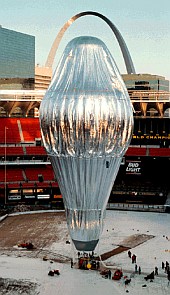
Steve Fossett completes the first solo transpacific hot-air balloon flight
On this day in 1995, Steve Fossett completed the first balloon solo flight over the Pacific Ocean.
The mission performed under the motto "Seoul to San Francisco" started on February 1995 in the capital city of South Korea. Althought the trip was intended for US coast, the balloon finally landed on February 21, in a farmer's muddy field in Leader, Saskatchewan, Canada.
The entire flight to cross the Pacific Ocean endured four days, covering 5345 miles and breaking the previous long distance record established in 5,208 miles. At the same time the aeronaut become the first person to fly a balloon solo across the Pacific Ocean.
During the flight, Fossett faced several problems like losing the propane heaters for his cabin which made the cabin froze during most of the trip, or almost hitting the Ocean's surface due to the failure of a burner. -
In February 2000
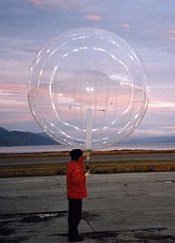
BOA balloon campaign over the South Atlantic Ocean
During February 2000, was performed from Ushuaia in the austral end of South America, the BOA (Ballons sur l'Océan Austral) campaign by French Space Agency CNES and the Laboratoire de Météorologie Dynamique of the CNRS.
The effort used superpressure balloons called BPCL (Ballon Pressurisé de Couche Limite) with a diameter of 2.5 meters and a total weight of 9 kg. They were adapted to perform long flights in the tropical and extra-tropical marine boundary layer, at a mean altitude of 1350 meters above the sea level. The payload was located inside the balloon and included sensors to measure along their trajectories pressure, temperature, water vapor and wind velocity (through successive GPS positions). The data was collected through the Argos satellite system.
Seven balloons were succesfuly flown from the eight launched. -
February 7 2002
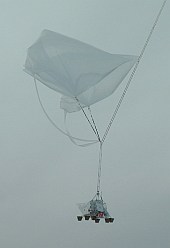
Very succesful flight of ARCHEOPS in the Arctic
On this day in 2002, was carried out from ESRANGE the third and last scientific flight of ARCHEOPS, a balloon-borne instrument dedicated to measuring the Cosmic microwave background (CMB) temperature anisotropies. Archeops carried cooled detectors working in four bands in the millimeter domain (143, 217, 353 and 545 GHz) with a high angular resolution (about 15 arcminutes) in order to constrain small anisotropy scales, as well as a large sky coverage fraction (30%) in order to minimize the intrinsic cosmic variance.
After a shortened flight in January due to a failure in the balloon, the instrument was recovered and launched again in February 7. This mission developed flawlessly along the 19 hours of flight obtaining 12.5 hours of CMB-type data (at ceiling altitude and by night). The payload landed in Siberia and was recovered -including the data stored on board- by a Franco-Russian team that worked on the landing site with temperatures as low as -40 degrees Celsius.
As a result the instrument obtained the first polarized maps of the galactic dust emission with that resolution. -
February 24 2007
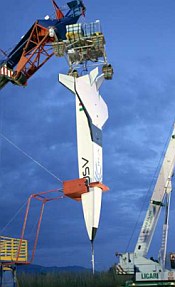
Balloon drop test of the CASTORE space plane over the Mediterranean
On this day in 2007 was performed over the aerial/marine test range of Salto di Quirra in Sardignia, in the Mediterranean sea a stratospheric drop test of the "FTB-1 Castore" model airplane. The craft was one of the two vehicles built under the PRORA-USV (Unmanned Space Vehicle) program which was conceived in 2000 under managment of the Italian Aerospace Research Center (CIRA). These vehicles were key pieces to test and verify advanced functionalities and critical operational aspects of a future Reusable Launch Vehicle (RLV) intended for orbital space missions.
The balloon was launched from the Tortoli/Arbatax airport on 24 February 2007 at 8:30 a.m. reaching the drop zone at an altitude of 20.2 km. At 10:08 the FTB was released when the balloon was located within a huge isolated area restricted to aerial and maritime traffic. The mission ended 22 minutes later with the splash-down of the space vehicle which was recovered by the ship "Tavolara" of the Italian Navy.

